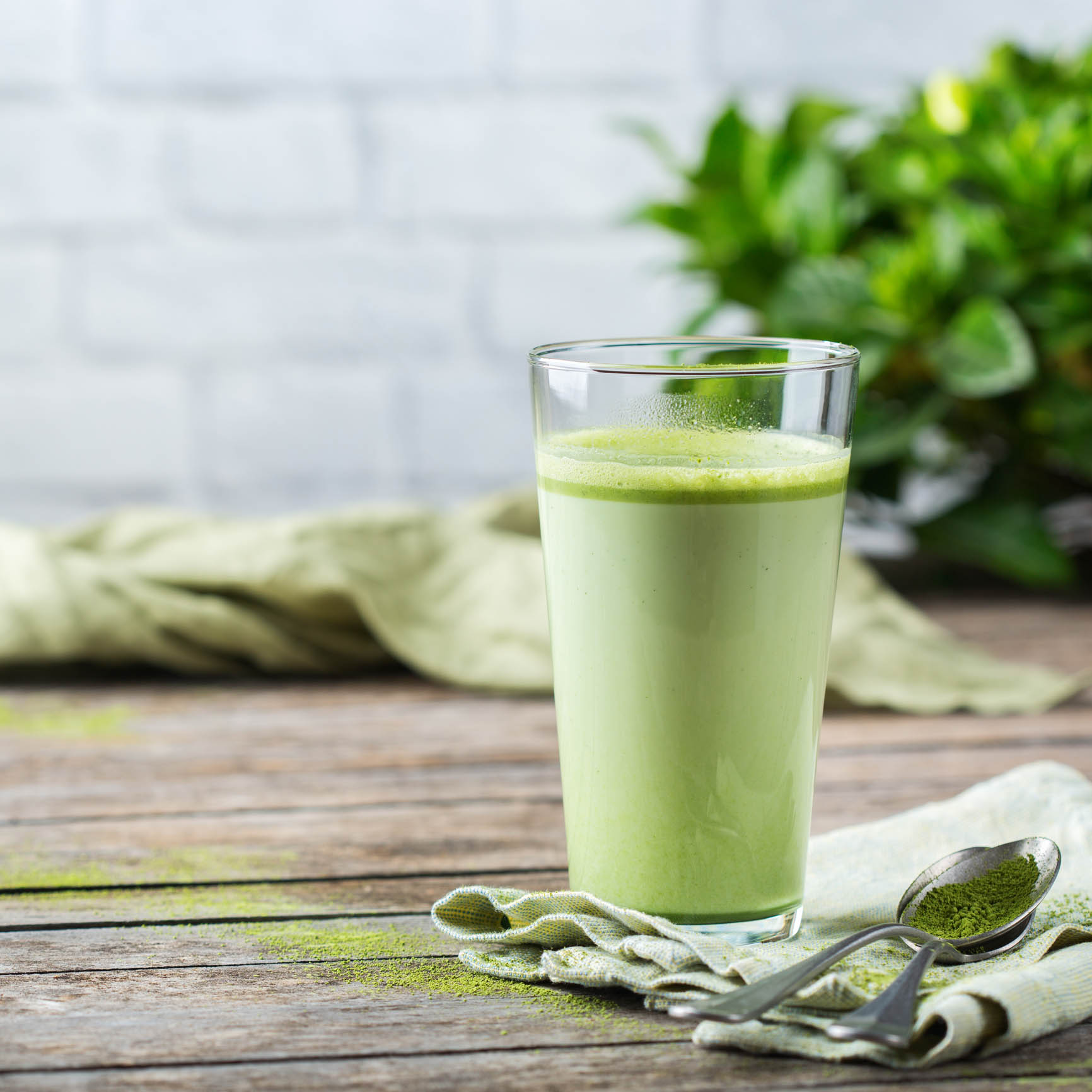
Matcha Green Tea
Matcha Green Tea: Health Benefits and Uses
Have you noticed a matcha latte at your favorite coffee shop? Or seen a package of matcha at the store and wondered what it is? Matcha is a green tea powder with numerous health benefits that has taken on popularity in recent years. Some people are ditching their java to switch to this magical green powder.
When you drink regular green tea, you’re steeping the leaves in hot water, and drinking the infusions of the leaves. Matcha is made using the whole leaf of the green tea plant. The tea leaves are ground into a fine powder that you mix into your beverage. Because the whole leaf is used, it’s more potent in antioxidants than traditional green tea. It’s especially rich in polyphenols which protect the body from heart disease, cancer, diabetes, neurodegenerative disease, and can help with digestion. Polyphenols are found in plants, and besides green tea leaves, polyphenols are found in cloves and other seasonings, cocoa powder and dark chocolate, berries, black currants, plums, sweet cherries, apples, beans, nuts, artichokes, chicory, red onions, spinach, soy, black tea and red wine.
Matcha does contain a small amount of caffeine – only 68 mg for 1 tsp of matcha powder. The effect of caffeine in matcha works differently than it does in coffee. The phytonutrients in matcha help the caffeine to be released more slowly into the bloodstream. L-theanine is another component of matcha; it’s an amino acid that has a calming effect on the mind and body. Therefore, the caffeine in matcha is much less stimulating than caffeine in green tea and doesn’t have the same crash effect when it wears off.
Ways to use matcha:
(1) 1 tsp mixed into 1 cup water or milk. Can serve hot or cold. Matcha is bitter on its own, so adding a tad bit of stevia or honey takes away the bitterness.
(2) Super Antioxidant Spiced Matcha Latte: 1 tsp matcha, ½ tsp dried turmeric, ¼ tsp dried ginger, ¼ tsp spirulina, 1/8 tsp black pepper, ½ packet of stevia. Mixes the best if pulsed in a blender.
(3) Matcha Green Tea Energy Bites: Matcha can be used for other culinary uses, too, besides beverages! These energy bites make a great snack!
(4) Matcha Honey Hot Chocolate: To satisfy a sweet tooth.
(5) Matcha Smoothie Bowl: A fun and beautiful way to start the day!
As you can see, matcha can be very versatile and can give you a new ingredient to play with in the kitchen to boost your antioxidants. If coffee makes you too jittery, or you just want something new, give it a try!



